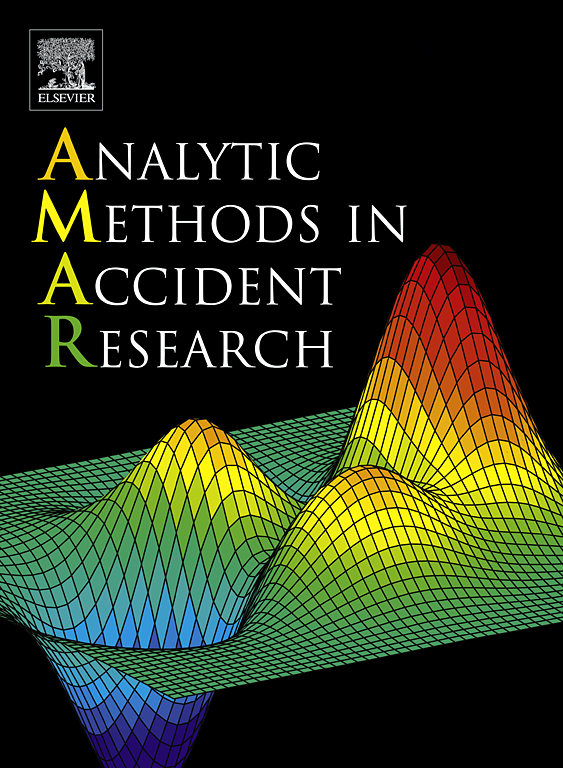Several studies have shown that crash risk is a dynamic quantity that is frequently changing with considerable spatial and temporal variations. Recent advances in safety evaluation techniques such as using extreme value theory (EVT) models provided the opportunity to use traffic conflict data obtained from road user trajectories to estimate real time safety metrics. These metrics can aggregate crash risk along a certain route based on the duration of exposure to unsafe road conditions. This paper applies a Bayesian hierarchal extreme value theory model to trajectories obtained from a drone dataset from Athens, Greece, to develop a safest route algorithm capable of informing users about the safest route in an urban network in real time. The study area selected consists of a rectangular grid made up of 102 signalized and unsignalized intersections. The dynamic crash risk for each link in the network was obtained and used to identify the safest route between any origin–destination pair and the corresponding fastest route. The safest routes were then compared to the fastest routes and were found to be 22% safer on average, resulting in an 11% increased travel time. Moreover, the safest route was identical to the fastest route in 23% of the origin–destination pairs analyzed and had an average similarity of 54% in terms of links. Recognizing the trade-off between safety and mobility, a multi-objective routing methodology was proposed which balances travel time and crash risk using a weighted preference for safety. This work has considerable potential for improving the safety of all road users and may also be used for fleet routing applications as part of multi-objective routing systems.


